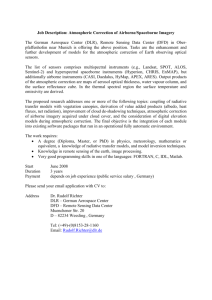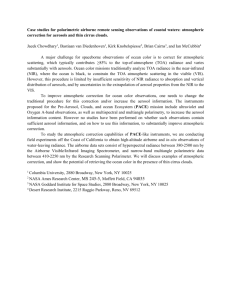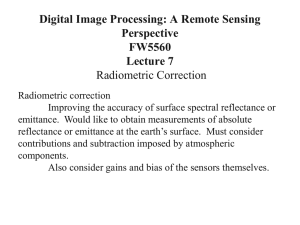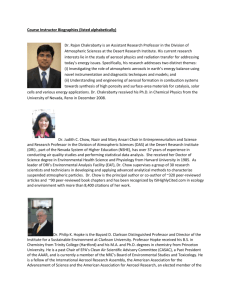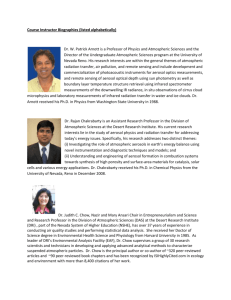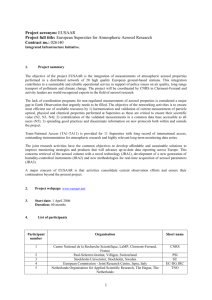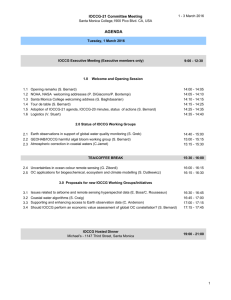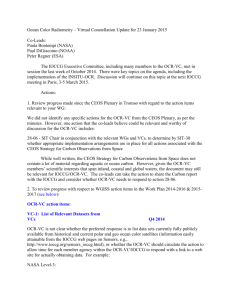minutes of kick-off meeting wg ioccg on atmospheric correction over
advertisement
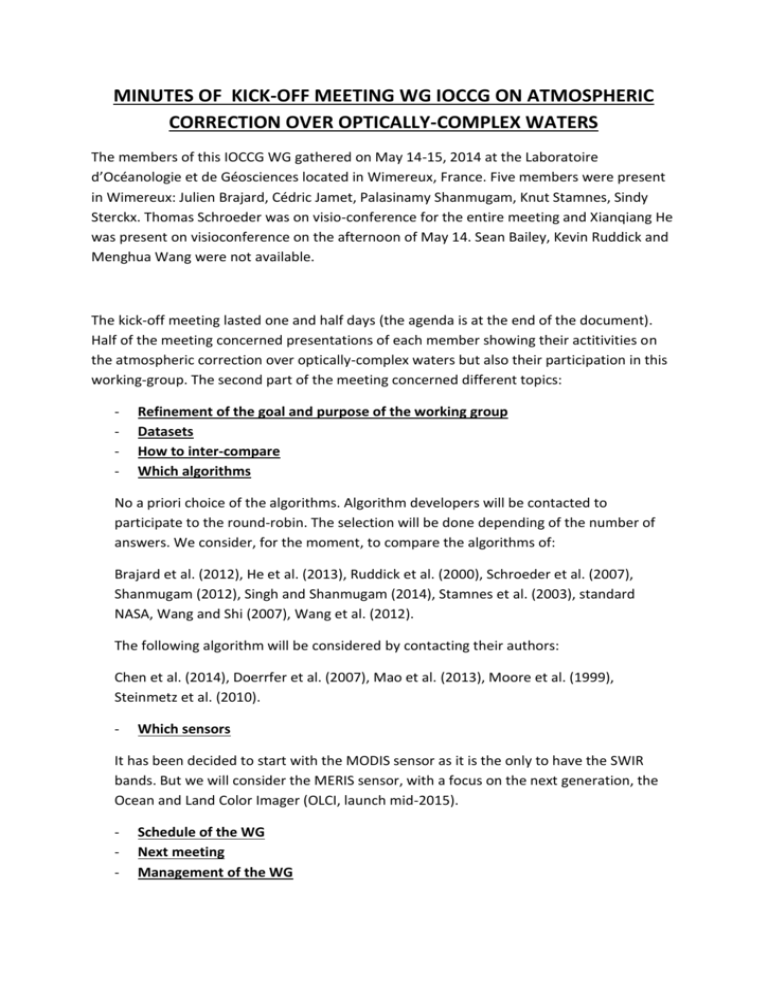
MINUTES OF KICK-OFF MEETING WG IOCCG ON ATMOSPHERIC CORRECTION OVER OPTICALLY-COMPLEX WATERS The members of this IOCCG WG gathered on May 14-15, 2014 at the Laboratoire d’Océanologie et de Géosciences located in Wimereux, France. Five members were present in Wimereux: Julien Brajard, Cédric Jamet, Palasinamy Shanmugam, Knut Stamnes, Sindy Sterckx. Thomas Schroeder was on visio-conference for the entire meeting and Xianqiang He was present on visioconference on the afternoon of May 14. Sean Bailey, Kevin Ruddick and Menghua Wang were not available. The kick-off meeting lasted one and half days (the agenda is at the end of the document). Half of the meeting concerned presentations of each member showing their actitivities on the atmospheric correction over optically-complex waters but also their participation in this working-group. The second part of the meeting concerned different topics: - Refinement of the goal and purpose of the working group Datasets How to inter-compare Which algorithms No a priori choice of the algorithms. Algorithm developers will be contacted to participate to the round-robin. The selection will be done depending of the number of answers. We consider, for the moment, to compare the algorithms of: Brajard et al. (2012), He et al. (2013), Ruddick et al. (2000), Schroeder et al. (2007), Shanmugam (2012), Singh and Shanmugam (2014), Stamnes et al. (2003), standard NASA, Wang and Shi (2007), Wang et al. (2012). The following algorithm will be considered by contacting their authors: Chen et al. (2014), Doerrfer et al. (2007), Mao et al. (2013), Moore et al. (1999), Steinmetz et al. (2010). - Which sensors It has been decided to start with the MODIS sensor as it is the only to have the SWIR bands. But we will consider the MERIS sensor, with a focus on the next generation, the Ocean and Land Color Imager (OLCI, launch mid-2015). - Schedule of the WG Next meeting Management of the WG Wednesday, 14, May, 2014: 9:00-9:30: Welcome (C. Jamet) 9:30-9:45: Why a new IOCCG WG? Purpose, goals of the WG and the kick-off meeting 9:45-10:15: Inter-comparison of atmospheric correction in moderate turbid waters for SeaWiFS and MODIS-AQUA (C. Jamet) 10:15-10:45: Atmospheric correction using NeuroVaria, (J. Brajard) 10:45-11:00: Coffee break 11:00-11:30: Contribution from Stevens Institute of Technology (K. Stamnes) 11:30-12:00: Sunglint and aerosol correction algorithms for ocean colour sensors: Preliminary results (P. Shanmugam) 12:00-12:30: Contribution from CSIRO (T. Schroeder) 12:30-14:00: Lunch 14:00-14:30: The use of NIR and SWIR wavelengths in the atmospheric and environment correction (S. Sterckx) 14:30-15:00: Atmospheric correction using the ultraviolet wavelength for highly turbid waters (X. He) 15:00: 17:00: Discussions 17:00: Adjourn Role of each participant Scope of the WG Previous experience on round-robins Lessons learnt from IOCCG report #10, CCI OC, … What type of algorithms? Which sensors? Which datasets? In-situ? Simulated? Satellite? Where? Schedule of the WG? Report in 2 years? Thursday, 15, May: 9:00-10:30: Discussions - - - Simulated datasets: useful? which aerosol models? Which RTE code for atmosphere and ocean? How to define IOPs (link with IOCCG WG K. Ruddick). What to simulate: ρTOA? ρrc= ρa+ ρra+ t.ρw? Multi-scattering? Which definition of Rrs? How to compare? o Match-ups? o Water-type classification o Transects o Error propagation Sensitivities studies: fixed aerosol/bio-optical model 10:30-11:00: Coffee break 11:00-12:30: Discussions - - Sensitivities studies: fixed aerosol/bio-optical model How to compare? o Match-ups? o Water-type classification o Transects o Error propagation o Influence of observation angles o ???? Adjacency effects Other suggestions 12:30-14:00: Lunch 14:00-15:30: Discussions 15:30: Adjourn One day workshop at Ocean Optics (Sunday, 25, October): 6-month progress Schedule of the WG? Report in 2 years? Management of the WG
